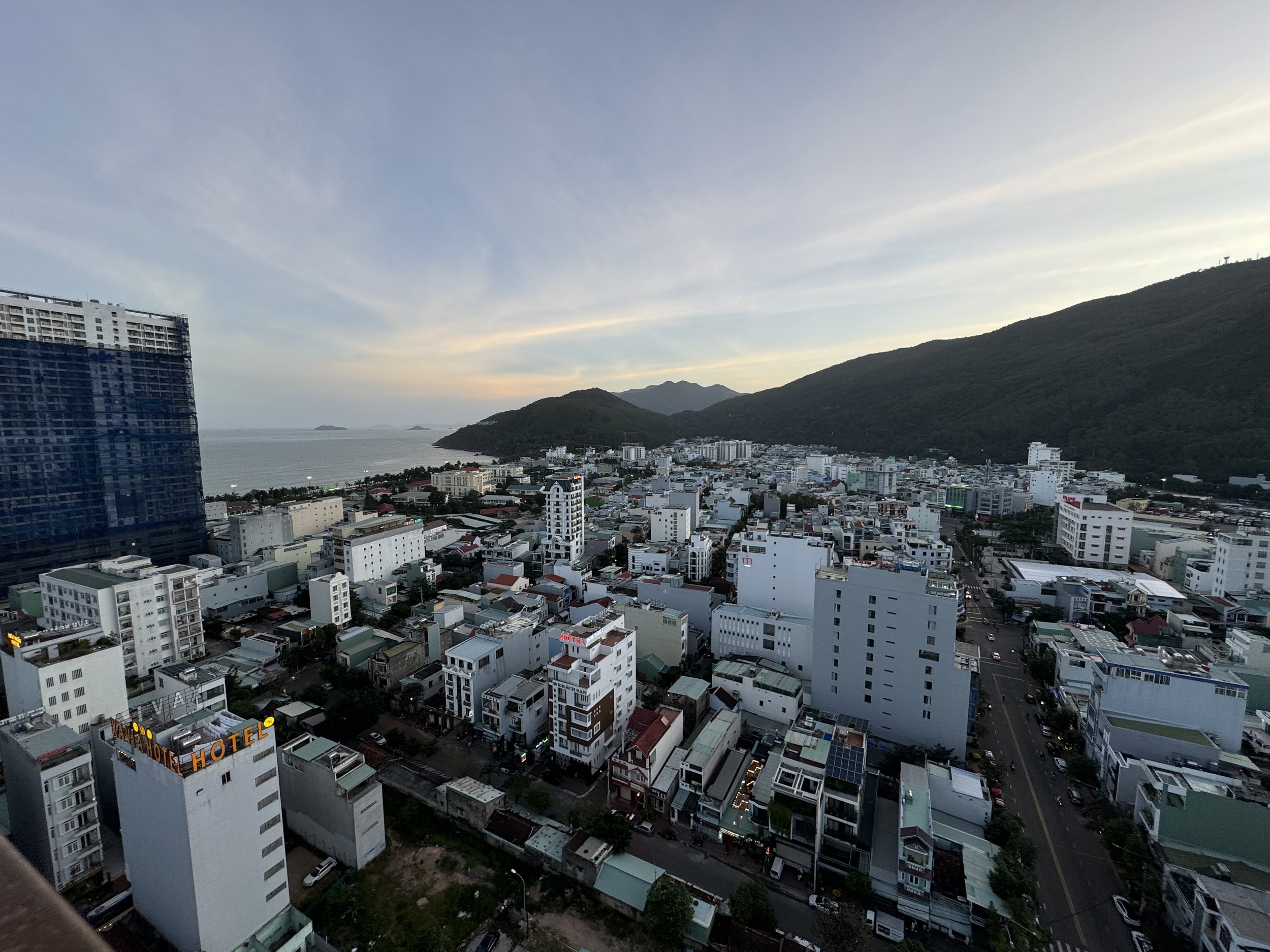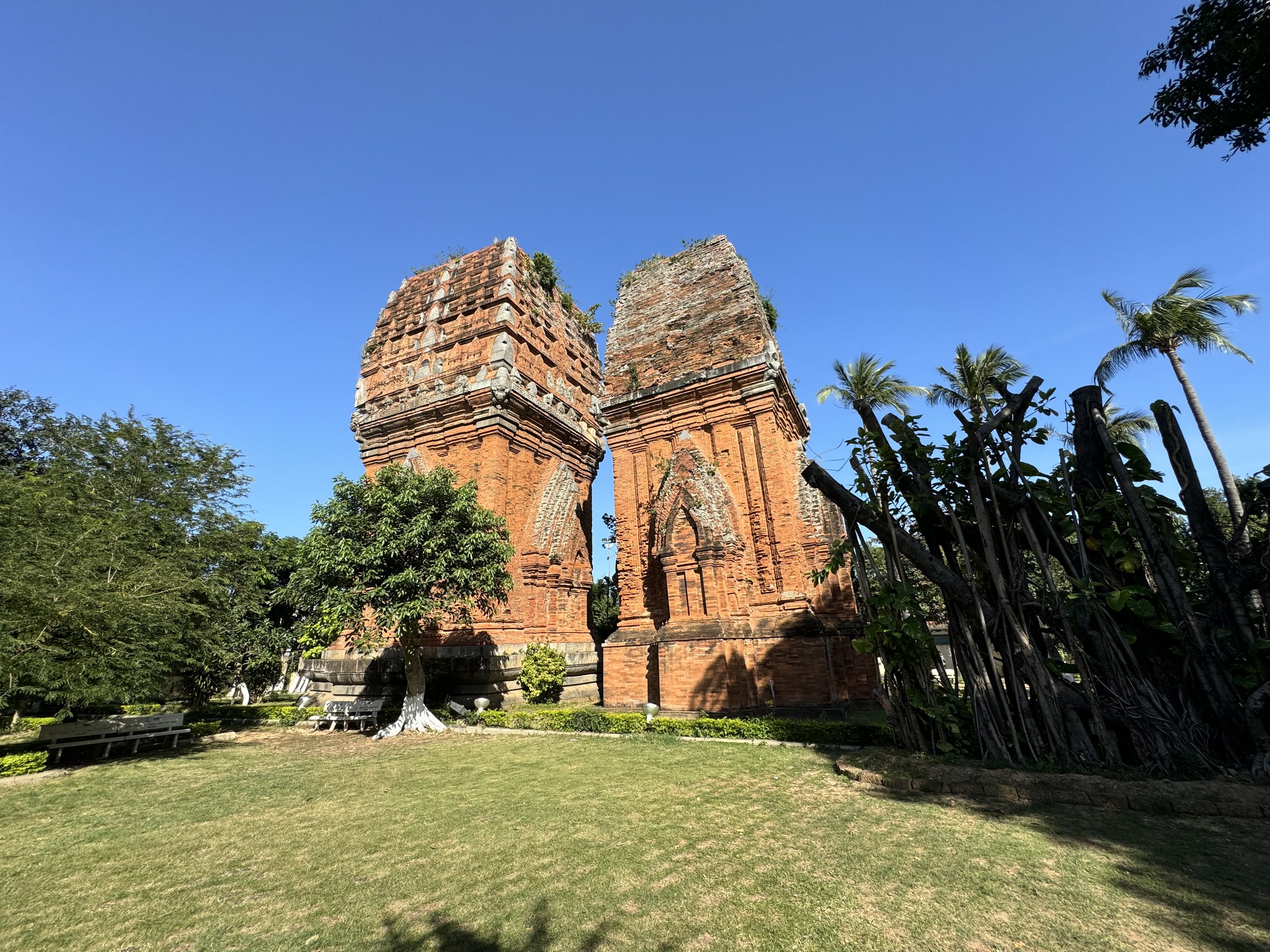Walkabout Quy Nhon, Vietnam
Quy Nhon, the capital of Binh Dinh province in central Vietnam, is a coastal city that blends historical depth with natural beauty. With a population of approximately 500,000 the city covers an area of 286 square kilometers, offering a diverse landscape that includes mountains, forests, hills, fields, salt marshes, plains, lagoons, lakes, rivers, shorelines, peninsulas, and islands.
The origins of Quy Nhon trace back to the 11th century during the Champa civilization, evident in the ancient Cham towers that dot the region. These structures, reminiscent of Cambodia's Angkor Wat, stand to remember a bygone era. Notably, the Banh It Towers and the Twin Towers (Thap Doi) are among the prominent Cham relics in the area. In the late 18th century, Quy Nhon played a pivotal role during the Tay Son dynasty. The city served as a significant seaport and was central to various historical events, including conflicts during the Vietnam War.
Today, Quy Nhon is recognized as a first-class city with a geo-economic priority and an urbanized infrastructure. The government describes it as one of the three commercial and tourism centers of the central southern coastal region, alongside Da Nang and Nha Trang. The city's economy has traditionally been based on agriculture and fishing. In recent years, however, there has been a significant shift towards service industries and tourism. There is also a growing manufacturing sector.
Quy Nhon's cuisine is a delightful reflection of its coastal heritage. The city is renowned for dishes such as "bánh xèo tôm nhảy" (jumping shrimp pancakes), "bánh hỏi cháo lòng" (a combination of rice vermicelli sheets and pork offal porridge), and "bún chả cá" (fish cake noodle soup). But, of course, I tasted beyond that with some local chicken and buffet options
During my visit, I was struck by the city's serene ambiance. Strolling along the main streets, with the beach just a stone's throw away, I noticed the absence of crowds—an off-season tranquility. The avenues are notably wide, and developments are evident everywhere, signaling a city on the rise. The beach itself is pristine, with calm waters ideal for swimming. While it may not cater to surfers, Quy Nhon offers a perfect setting for relaxation and leisurely walks along the shore.
One of the highlights of my trip was dining at a renowned local restaurant known for its chicken dishes. The establishment has grown over the years, evolving from humble beginnings to a popular dining spot. The grilled, steamed, and fried chicken offerings were exceptional, making it one of the most memorable meals I've had.
Exploring the city further, I visited the Thap Doi (Twin Towers), an ancient Cham temple located right in the heart of the city. These magnificent structures, made of brick and carved stone, have stood for centuries and are beautifully illuminated at night. Their architecture bears a resemblance to Cambodia's Angkor Wat, though on a more intimate scale.
Venturing about 15 kilometers outside the city center, I arrived at the Binh Lam Tower. Nestled in a quaint countryside hamlet, the journey there took me through narrow, one-lane roads winding amidst lush rice paddies. Standing at approximately 20 meters high, this tower, though not as imposing as others, offers a serene setting surrounded by Vietnam's famous seas of green rice fields.
In the evenings, the city comes alive with vibrant flower markets, especially during the Tet season. The central areas, adorned with new developments, buzz with activity as locals and visitors alike gather to celebrate. Quy Nhon is a city that harmoniously blends its rich historical tapestry with modern growth. Its serene beaches, ancient temples, and delectable cuisine make it a must-visit destination for those seeking an authentic Vietnamese experience.

